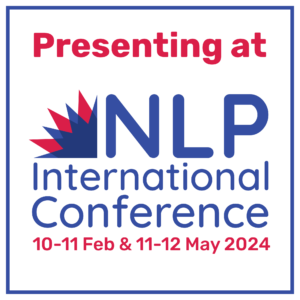How NLP Can Help You with Procrastination

“For things to reveal themselves to us, we need to be ready to abandon our views about them.”
― Thich Nhat Hanh
As the lockdown continues, many of us are trying to use the time to achieve certain goals. Whether it be writing, meditating or exercising more, there are goals, big and small, that some of you may want to achieve.
This week, I want to write about a phenomenon that can run counter to these intentions. This phenomenon is best expressed as a question: “Why am I unable to pursue my goal?” and often manifests itself, in my case at least, as a certain behaviour — procrastination.
Positive Intention
There’s a principle in NLP called Positive Intention. Put simply, it states that every destructive behaviour that we engage in today, originally had a “positive intention”.
In other words, everything we do once came from a good place.
According to the principle of Positive Intention, there is a simple reason behind undesirable behaviours. They arise, and continue to arise, because some part of you sees no other way of getting a basic need met, without holding on to that behaviour.
But how does this explain procrastination?
Procrastination
To best explain the role that Positive Intention plays in procrastination, I’d like to offer a personal example. As someone who enjoys writing, I am often confused by my inability to convince myself to actually sit down and write.
Instead, I will do the washing, re-arrange my books alphabetically. I have even gone so far as to dust my plants in the past.
The problem? Procrastination.
The reason? No idea.
So I labelled myself “a procrastinator”, grew increasingly annoyed at myself, and continued to groom my plants. Unsurprisingly, nothing got written.
The Power of Positive Intention
A solution came when I discovered the theory of Positive Intention.
To reiterate, the theory postulates that all undesired behaviour once had a positive purpose – it met a very real need. To eliminate the behaviour then, you have to meet this need in another, healthier way. Until you do so, the behaviour will persist.
This worked well for me. Once I was able to identify the motivations behind my procrastination, I was able to understand the needs that the behaviour was meeting, and meet them in a healthy way instead.
Plus, understanding that my behaviour was ultimately coming from a positive place, one of self-preservation rather than self-sabotage, allowed me to consider it more kindly, and with greater compassion, when it arose again.
The process for the Positive Intention Process is simple, and I have set it out below. Although I’ll be using it in the context of procrastination, it can be applied to many different behaviours: smoking, drinking, a lack of self-care, infidelity etc.
Overcoming Procrastination Using Positive Intention
So there you are again, a duster in one hand, a cactus in another, when it suddenly hits you — I’m probably procrastinating.
Where do you go from there?
Step 1: Ask yourself: what does procrastination bring you?For example:
- It gives me time to relax, and do the things that I don’t otherwise have time for
- I helps me feel like I’m doing things because I want to, rather than because I have to. So, the things that I procrastinate to do, I actually enjoy more
Step 2: Dig a little deeper.What might your procrastination be telling you about the thing that you are avoiding? For example:
- I don’t really want to be doing the thing that I am procrastinating away from. I feel like I should want to do it, but I don’t actually want to
- I’m scared of doing the thing that I am avoiding, because of a fear of failure/vulnerability/exposure
- The thing that I am avoiding is not “me” anymore. This is a really interesting one, because, sometimes, goals set by a past version of ourselves no longer feel right for our present versions. Yet we feel the need to persevere with them anyway, to avoid our own self-criticism (“procrastinator!”) or the criticism of others.
This step can take you places. What I mean by this is — you can find yourself unearthing reasons behind your procrastination, that your conscious mind was totally unaware of.
For example, when I reflected on my procrastination, I vividly remembered sitting in a room with red curtains and bookshelves, studying. This is where I studied for my college finals. At the time, I put a lot of pressure on myself, worked hard, and burnt out. I realised that this is what my subconscious is now protecting me from, by procrastinating. The underlying root cause — fear.
Step 3: Once you’ve isolated the root of the behaviour or emotion, and understand the subconscious need that it’s meeting, you can start to work on meeting it in a healthy way instead.
This can happen in two ways:
- Behavioural change.This means offering yourself new behavioural options for each of your current coping mechanisms. For example, if procrastination offers you relaxation, then carve out a specific time when you can relax. If procrastination is a way for you to do what you actually want to do, then recognise this and give yourself permission to do so instead.
- Self-negotiation.In other words, reassuring yourself that the past will not repeat itself, and offering yourself evidence as to why. For example, my procrastination is rooted in fear. Yet I know I won’t allow myself to burn out again, because I have healthy mindfulness practices in place now, which allow me to recognise my needs, and prioritise them. Reminding myself of this has been a key form of self-negotiation.
Concluding Thoughts
Try not to pressure yourself to feel “fixed” after doing this process once. The same feelings and behaviours may come up again.
Chances are, you will procrastinate again. You will find yourself on Amazon, ordering books you will never read, to avoid writing your own again (or maybe that’s just me).
That’s not a failure. It’s a natural part of change. “Big” change is made up of many individual acts, over a long period of time.
So be patient with yourself, and recognise that progress is a dance, not a straight line — it contains many steps backwards and forwards.
But by learning to understand the unconscious needs underlying your limiting behaviours and emotions, you can learn to meet these needs in a healthy way instead, and move forwards with your life, in the direction you want.
About the Author
Sophie Leane is a guest contributor to The NLP School on Medium and the NLP School blog. You can also find her writing on Medium HERE.
Did you like this post?
Then check out our events and courses!
Where to find us
For posts, events, free open days and more, follow NLP School on:
What to read next
Leading Yourself Through Uncertainty









